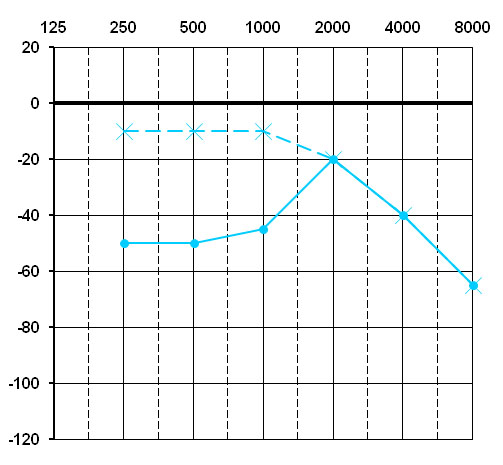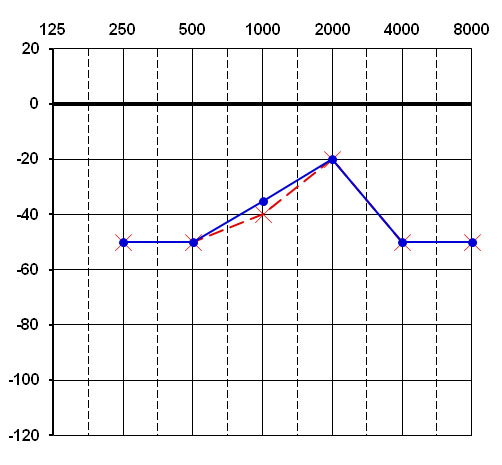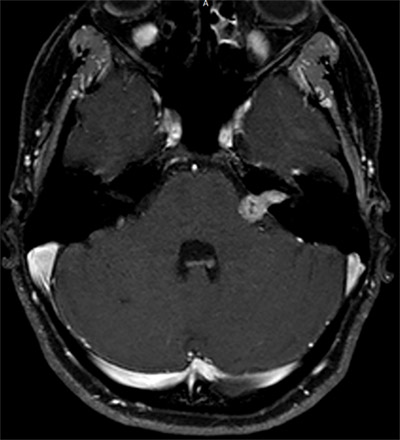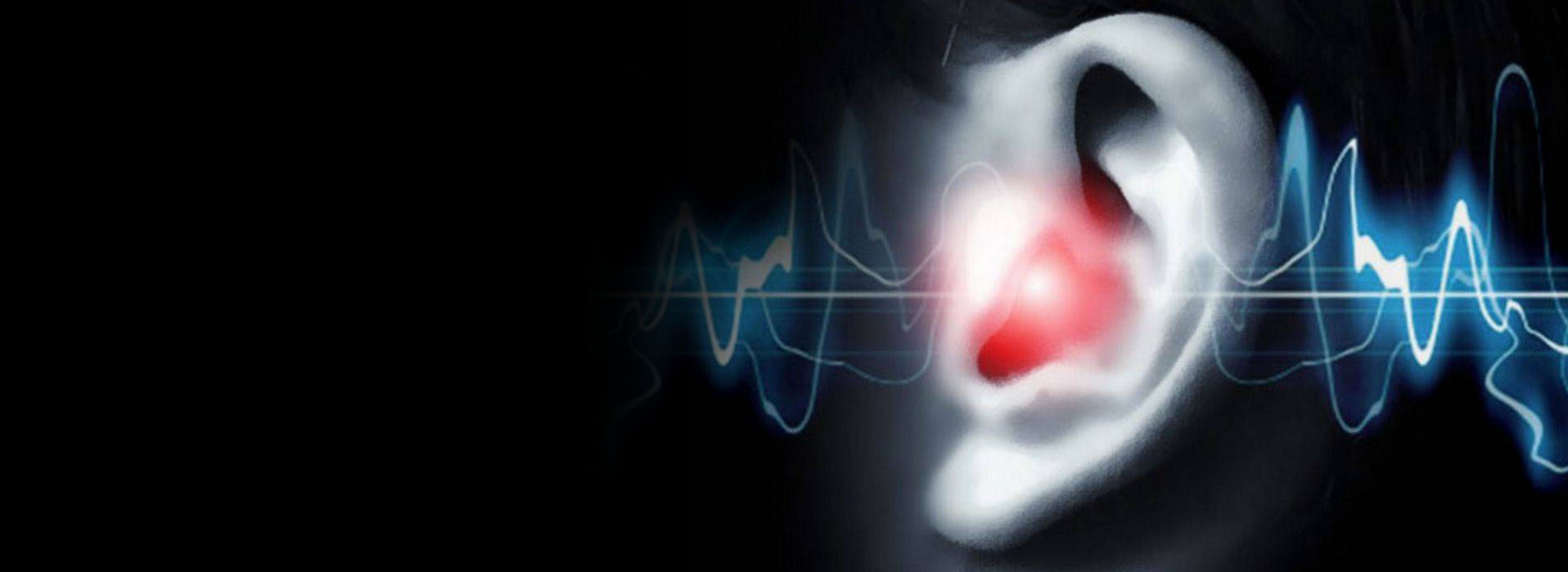Hearing loss
Hearing loss has various causes and can be isolated or accompanied by vertigo and tinnitus. The two main types of hearing loss are conductive and sensorineural hearing loss.
Conductive hearing loss
This results from a dysfunction of the middle ear. The pure tone audiometry shows hearing loss associated with a decrease in the air-conducted signal. However, auditory perception is normal when sounds are delivered by bone conduction using a bone vibrator. So there is a difference between the perception of sounds by air and bone conduction.

Conductive hearing loss
Tympanometry is required to rule out serous otitis media. If the tympanometry rules this out, a scan of the petrous temporal bones should be prescribed to detect otosclerosis or a malformation (of the different ossicles: malleus, incus, stapes) in the middle ear responsible for the hearing loss.
When otosclerosis is detected (no stapedial reflexes during impedance measurement) and is found to be blocking one of the middle ear ossicles, the stapes, surgery may be offered. If surgery is not possible, the patient can be fitted with a hearing aid.
Sensorineural hearing loss
Sensorineural hearing loss is related to a neurosensory deficit either in the sensory hair cells or the auditory nerve.
The most common type is age-related (presbycusis), a hearing loss at high frequencies (4,000 Hz or 8,000 Hz) that can make it difficult to understand speech against background noise.
Figure: presbycusis-type sensorineural hearing loss
This can be caused by hearing loss in the lower frequencies in Ménière's disease or cochlear hydrops. Systemic or intratympanic medical treatment is generally prescribed to improve hearing and tinnitus in the frequently associated low frequencies.

Hydrops-type sensorineural hearing loss
This type of hearing loss can occur abruptly and affect several sensory frequencies. Medical treatment based on corticosteroids and antivirals is prescribed after ensuring that the brain MRI focusing on the internal auditory canals is normal. However, medical treatment does not always enable a full recovery and the patient may have residual hearing loss in one ear that can interfere with their work or family life. After some time, a hearing aid with or without a tinnitus masker can be recommended.
In some cases, hearing loss can be caused by an eighth nerve tumour. This benign tumour will require a full otoneurological assessment to choose the best treatment. If the patient is simply monitored, a hearing aid can help the patient.

Lastly, some cases of unilateral or bilateral hearing loss are caused by a cochlear malformation (Mondini malformation) or autoimmune disease. Imaging (scan of the petrous temporal bones) and autoimmune testing must be recommended to adapt the treatment.
